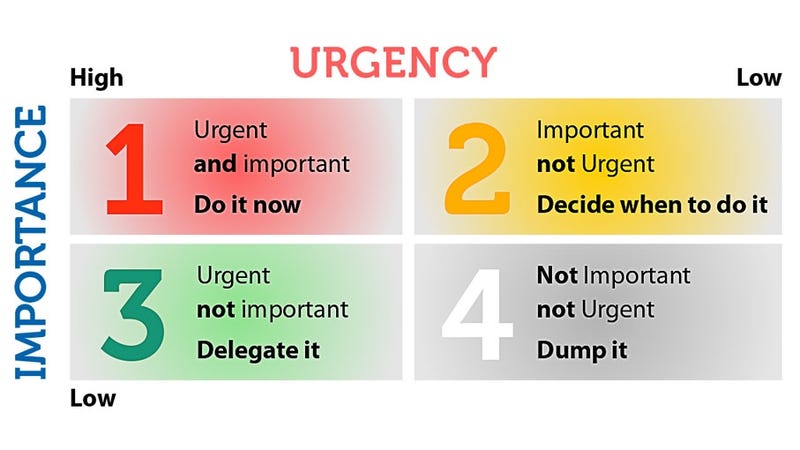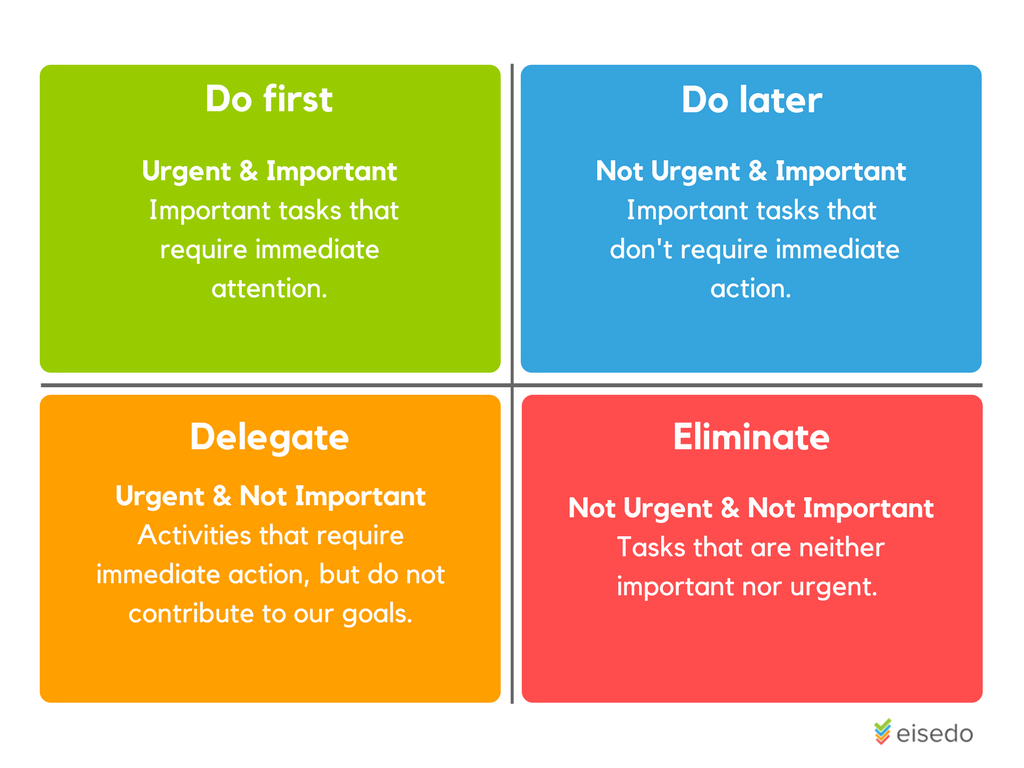
This could involve tasks like creating a tagline, developing a logo, writing a blog post, keeping track of your costs, and other similar jobs. These are often long-term activities that you begin working on once you have completed all of your urgent assignments. The third quadrant (or sometimes the second, depending on how you arrange your own Eisenhower Matrix) is reserved for tasks vital to your productivity but does not have a strict deadline. As a result, this quadrant is sometimes referred to as the “delegate” quadrant because it is the quadrant that you would assign to an employee or helper if at all possible to complete. However, they are not necessarily crucial or critical to your productivity. You need to complete these jobs as soon as possible since you don’t want to keep clients and customers waiting. It may seem paradoxical to simultaneously regard work as “urgent” and “not significant.” Yet, you can find the matrix’s true strength in this surprising way of thinking.įor example, you may spend a significant portion of your time responding to emails or consumer feedback. Tasks that require urgent attention but are not necessarily particularly productive fall into this category.

This is the second quadrant of the map, sometimes referred to as the third quarter. Through the Eisenhower Matrix, you’ll observe that the overall theme is balancing the four quadrants to maximize production. This quadrant sometimes referred to as the “do” quadrant, is where you would likely spend the most of your working day, concentrating on your most critical and demanding tasks.Įven though this is critical (as indicated by the title of this quadrant), it is equally vital that you avoid working primarily from this quadrant. Tasks that require the most incredible amount of your attention will be placed in this quadrant, the highest priority quadrant. Below is a breakdown of each quadrant to assist you in determining which of your chores should be placed in which categories. It has already been noted that there are four quadrants in the Eisenhower Matrix which are essential and urgent, important but not urgent, important but still urgent, and not essential but not urgent. The Four quadrants of the Eisenhower Matrix The Important and not urgent quadrant is the most productive category, as it allows you to complete chores without having to stay up late at night worrying about them. While this is a perfect area to function in, it may also result in high-stress levels and burnout. When working, it’s natural to believe that the bulk of your time should be spent in the vital or urgent quadrant. In an ideal situation, you will spend very little time on things that are not important and not urgent or on jobs that are not important and urgent. As an alternative, it is necessary to determine which quadrant you wish to devote the most incredible amount of your time to. Remember that balancing your Eisenhower Matrix does not imply that you must assign an equal number of tasks to each box on the grid. You’ll be able to see which quadrant of the matrix you’re spending the most time in – and odds are, it’s the quadrant with the most extended to-do list! You may start balancing the quadrants and, consequently, your time. The Eisenhower Matrix may help you visualize your daily, weekly, and monthly activities.

PRIORITY MATRIX QUADRANTS FULL
Instead, direct your thoughtless effort where it belongs and devote your full attention to the tasks that require it. The Importance of using The Eisenhower Matrixīy organizing your time and duties in this manner, you may avoid mindlessly working on various projects for hours on end. As a result, he developed the now-famous Eisenhower principle, which helps us prioritize based on urgency and Importance.

Later, he was named NATO’s first supreme commander.ĭwight had to make complex judgments daily about which of the numerous jobs he should concentrate on. He was a commander in the United States Army and the Supreme Commander of the Allied Forces during World War II before becoming President. Eisenhower served as the 34th President of the United States.


 0 kommentar(er)
0 kommentar(er)
